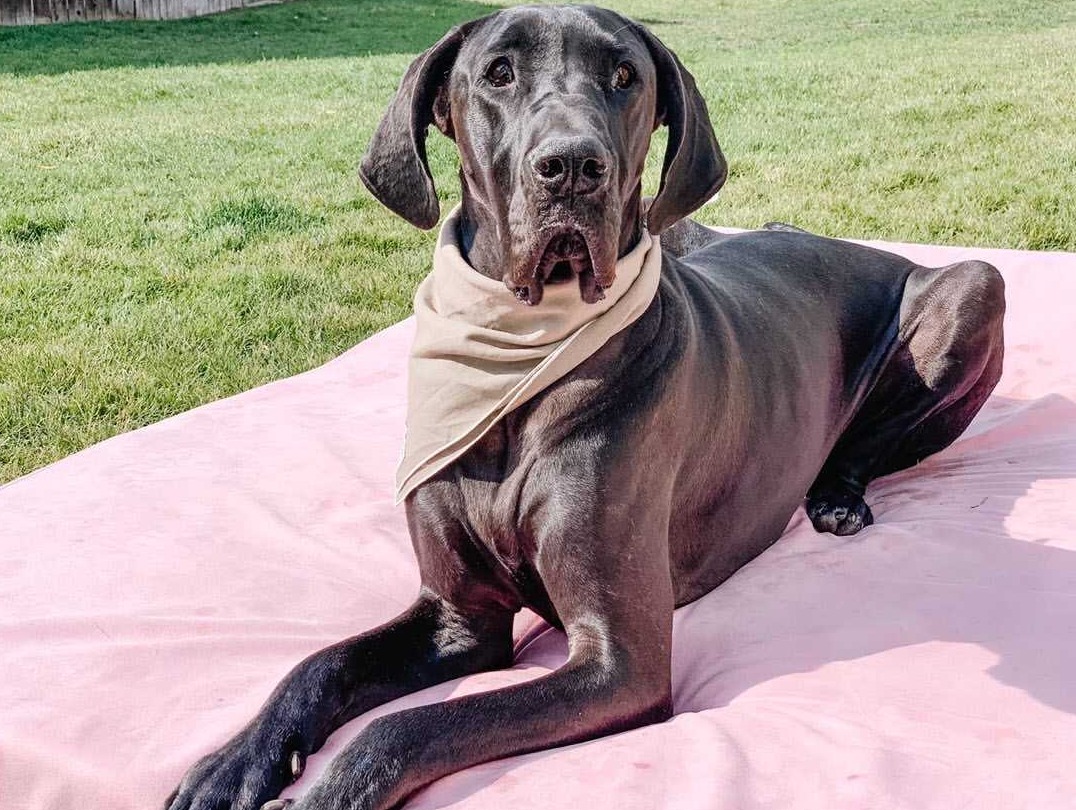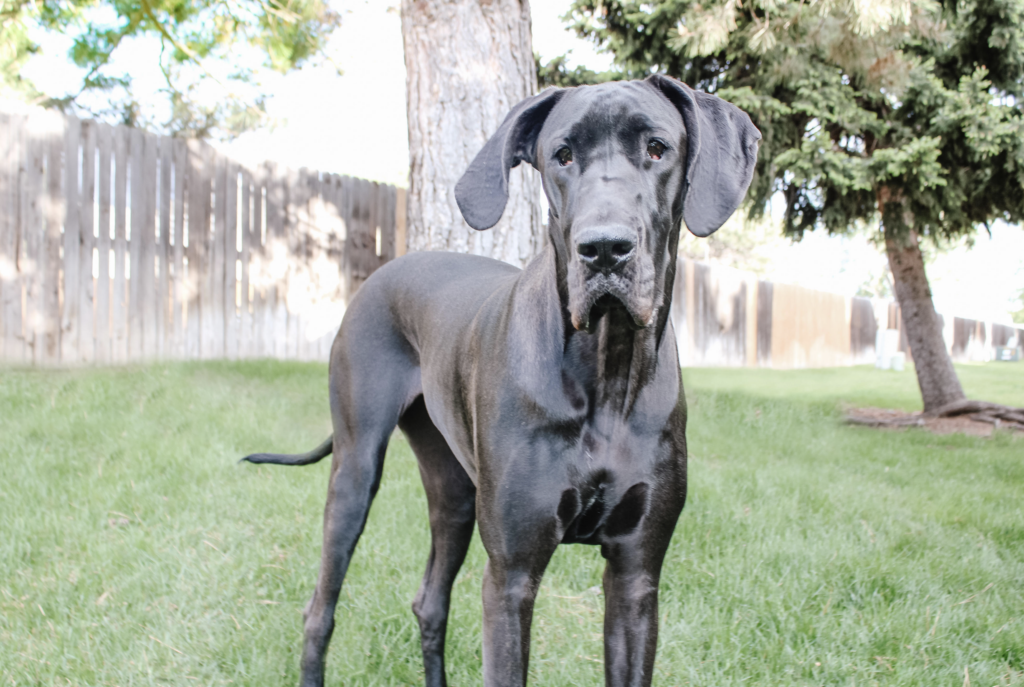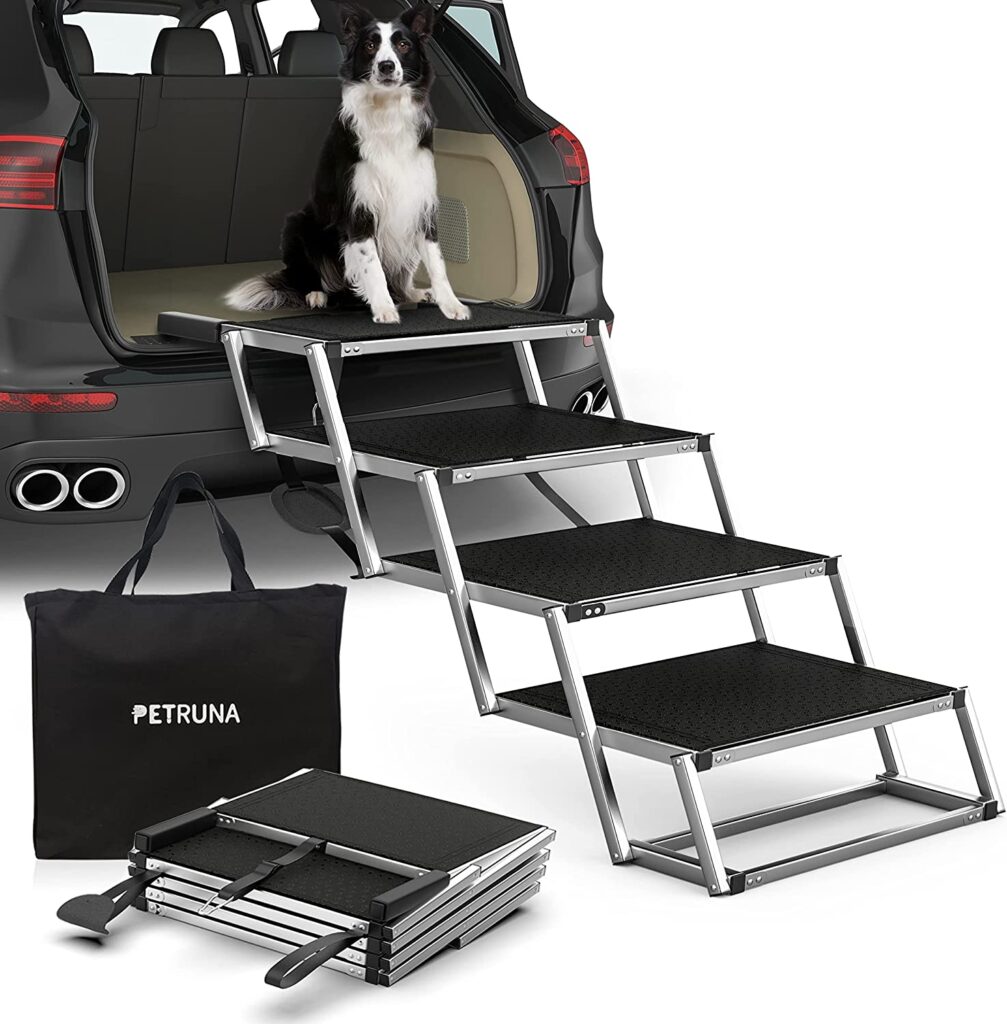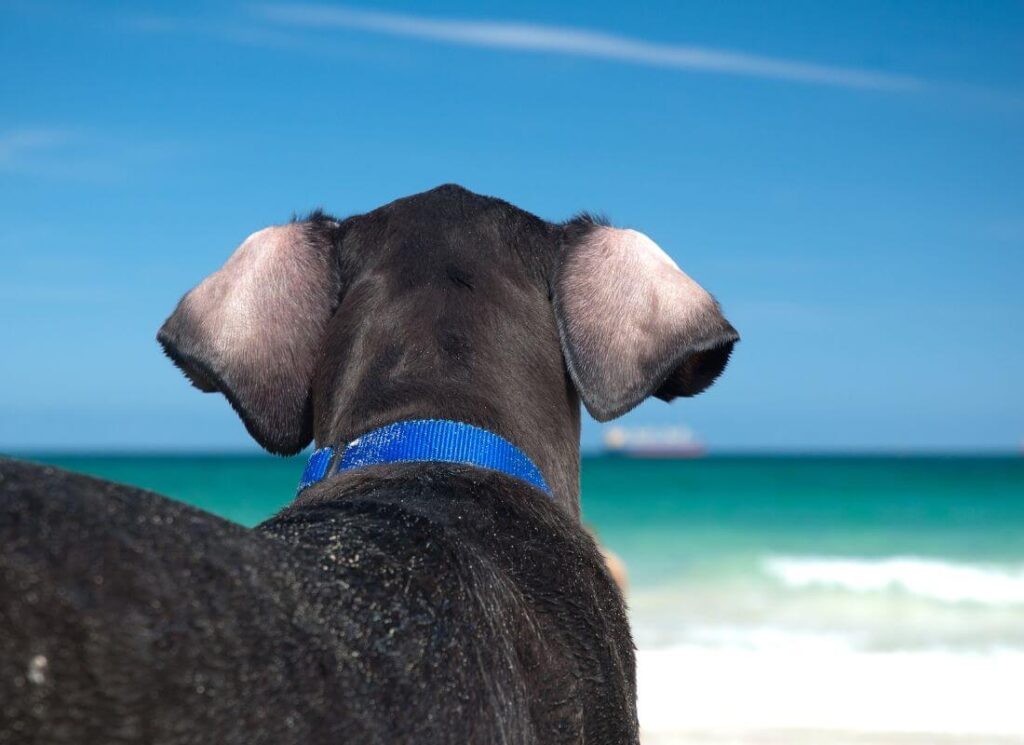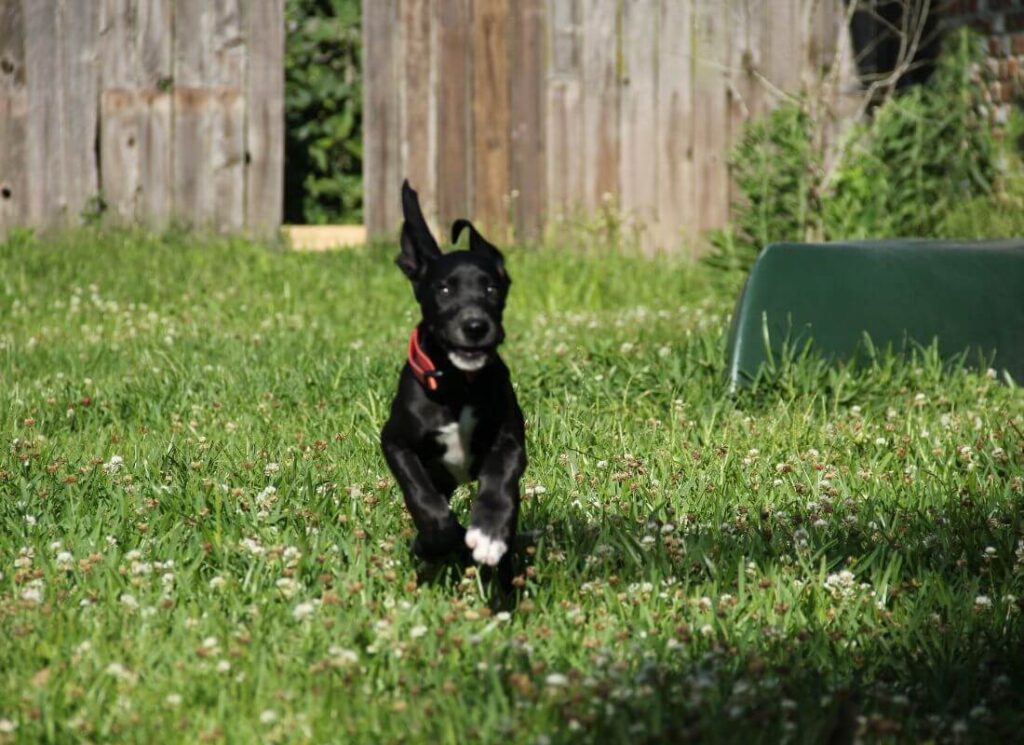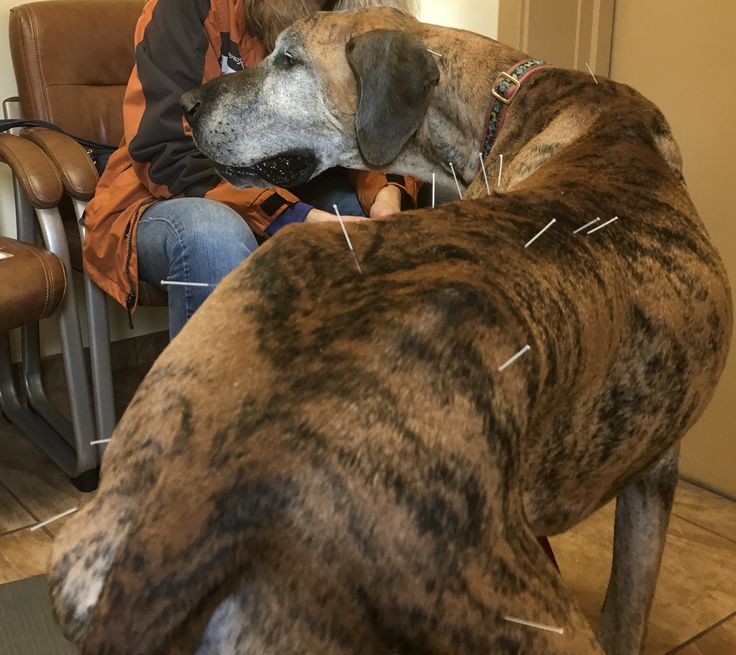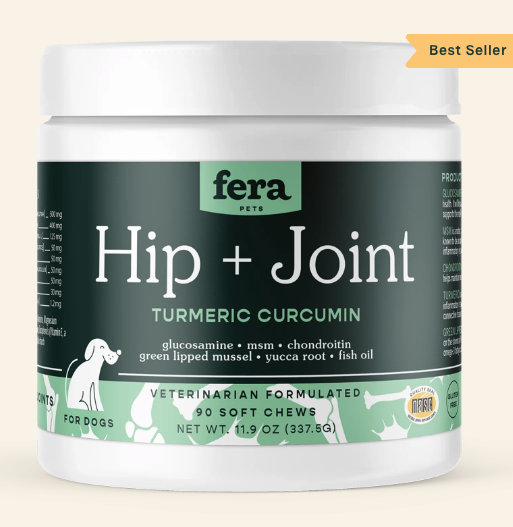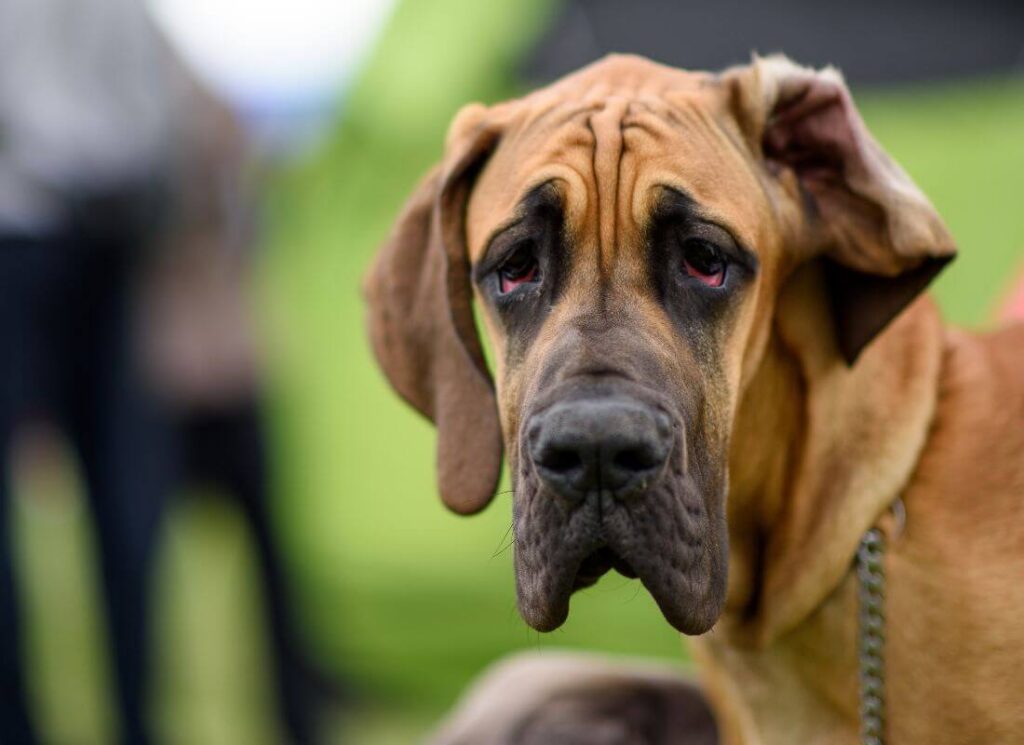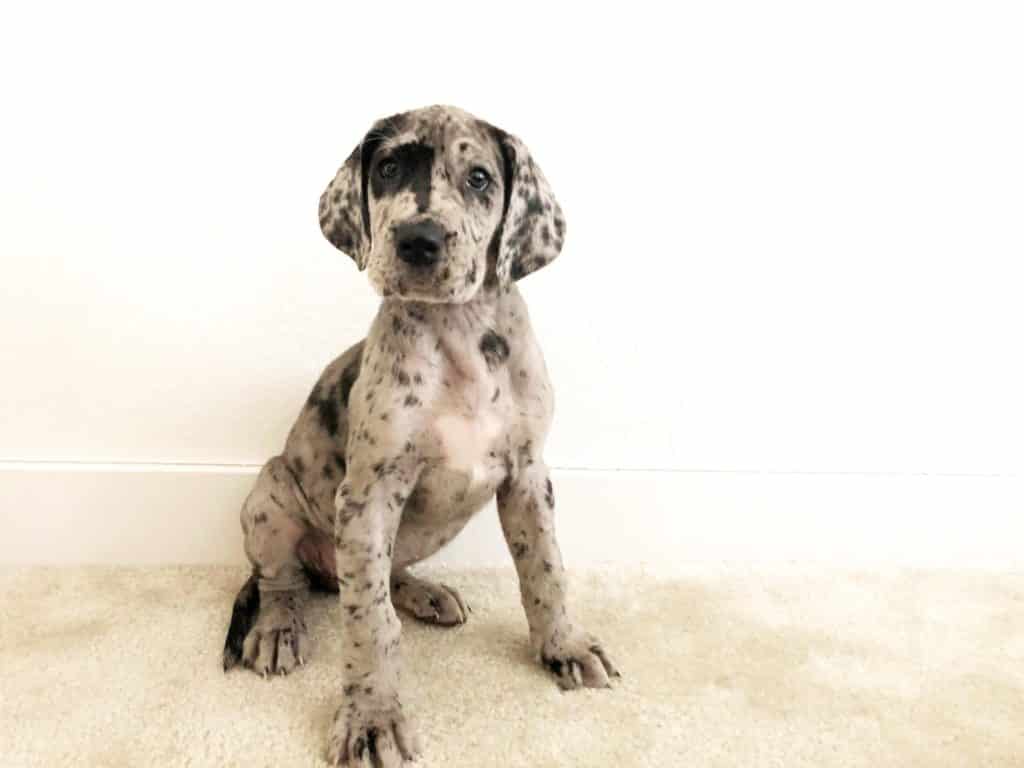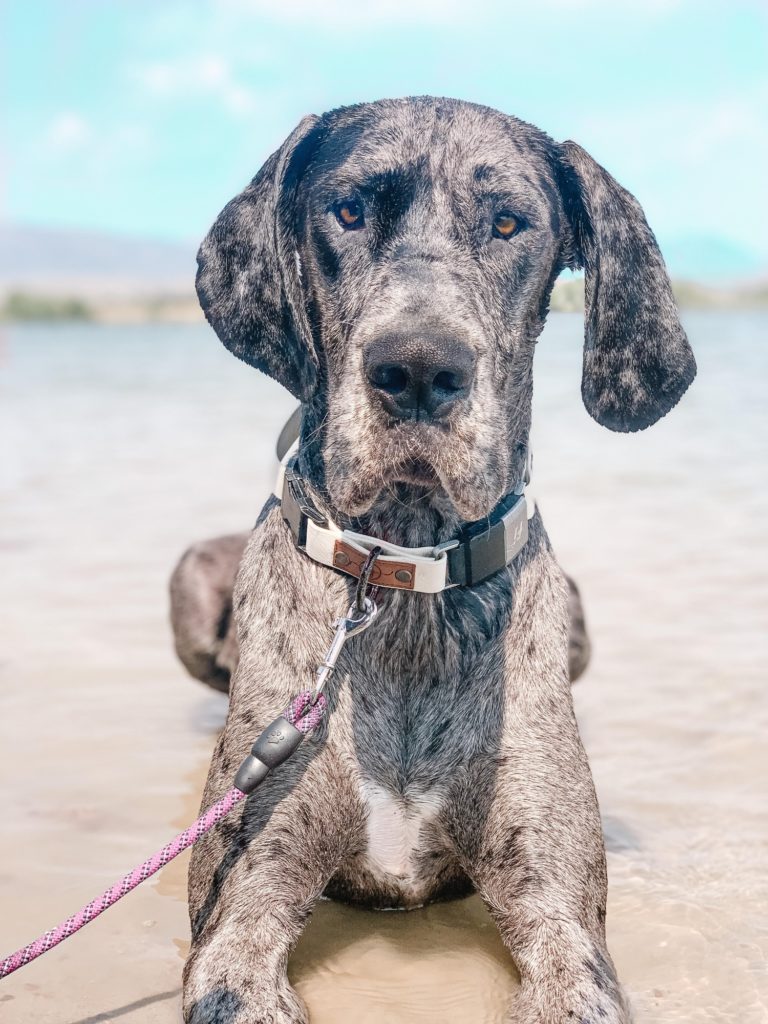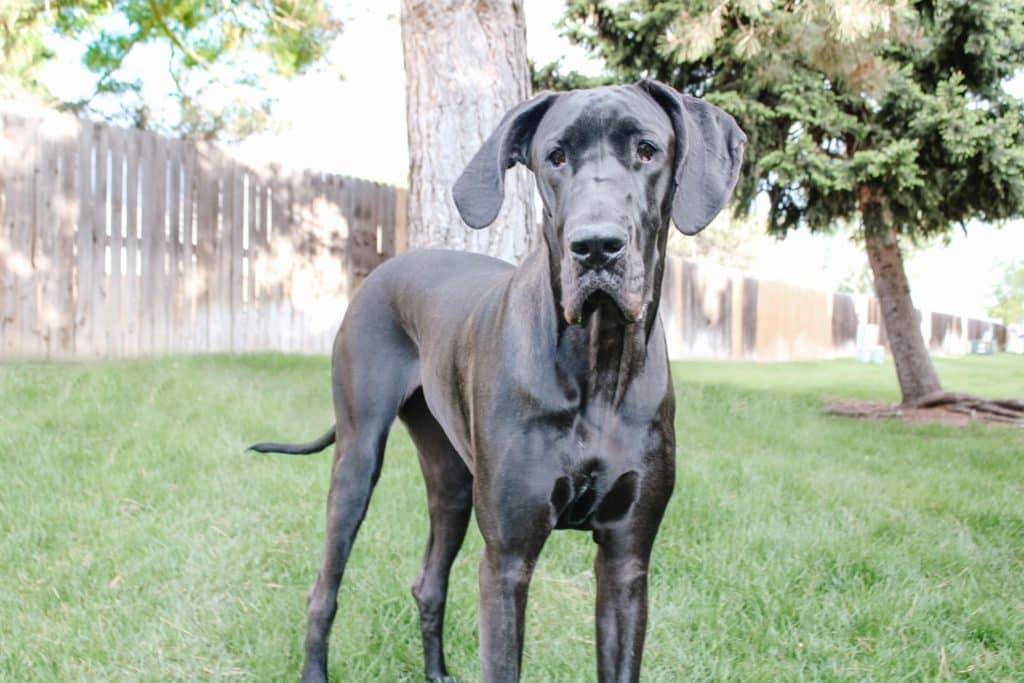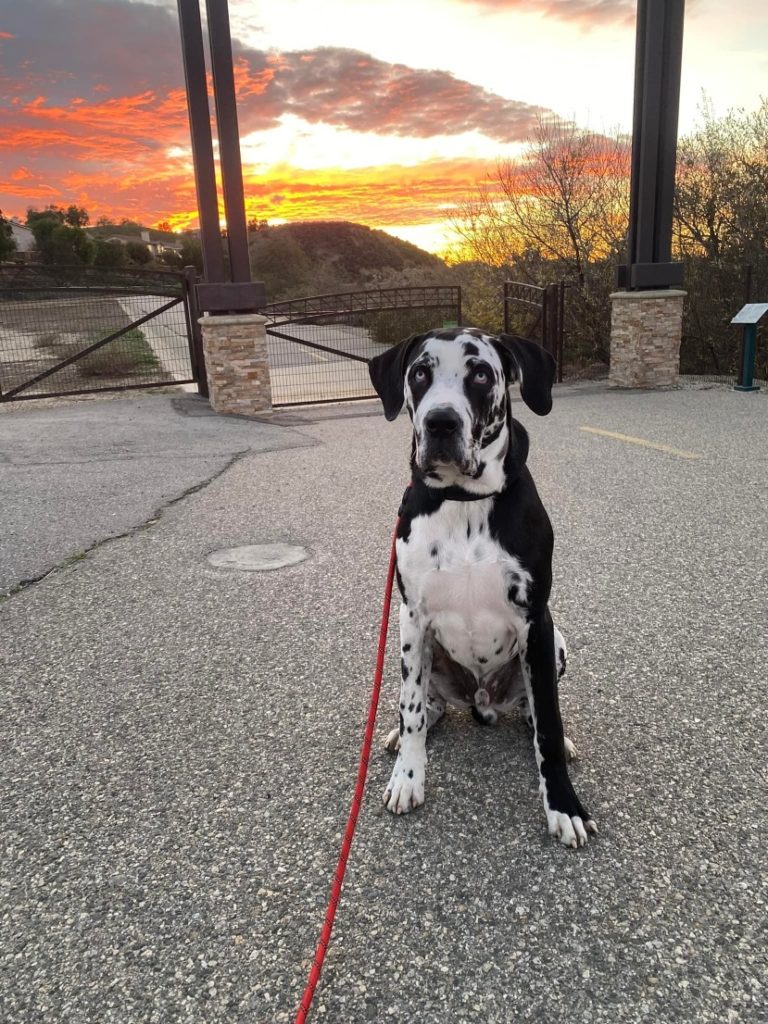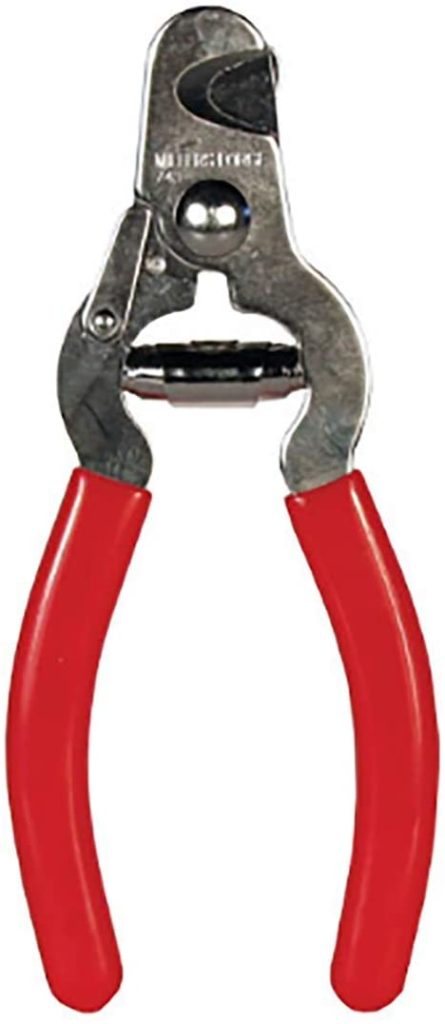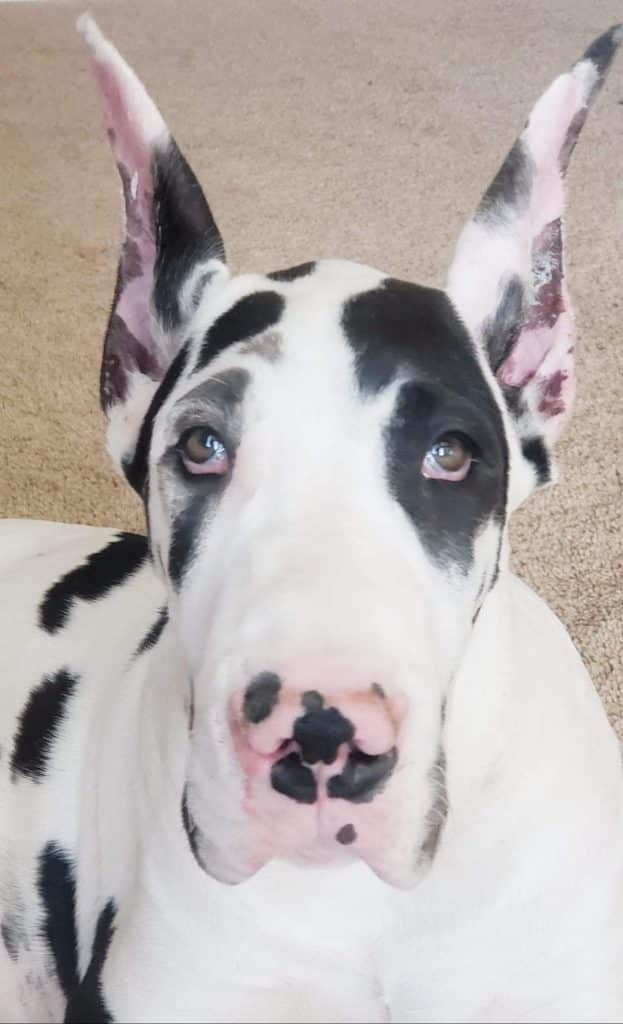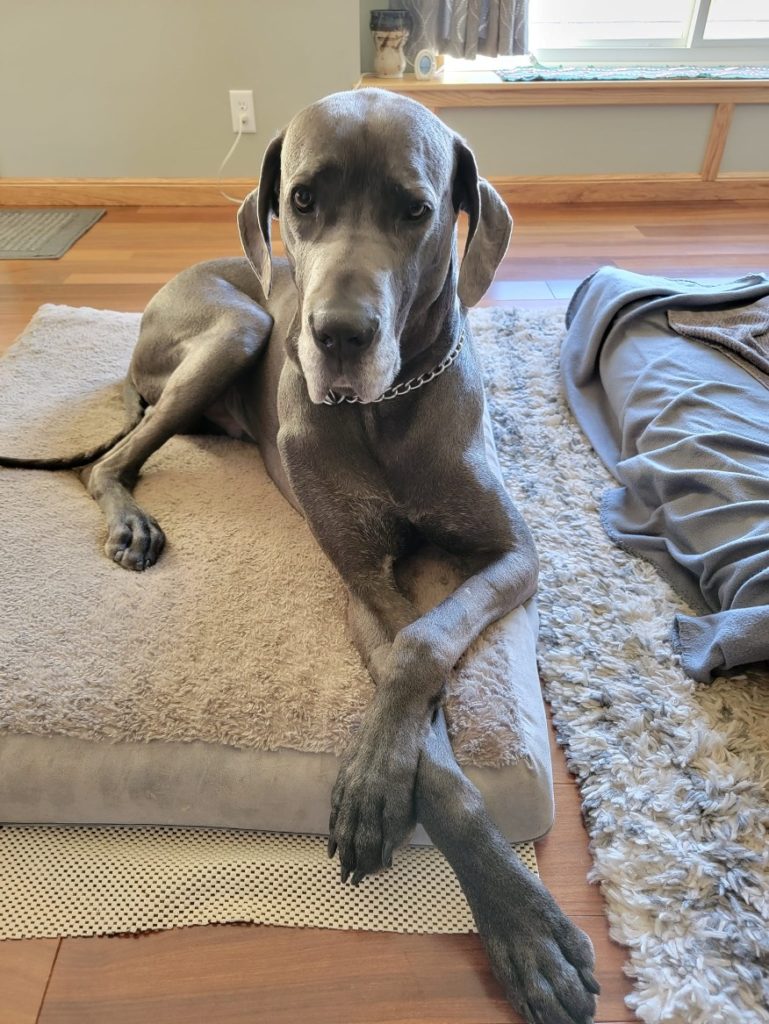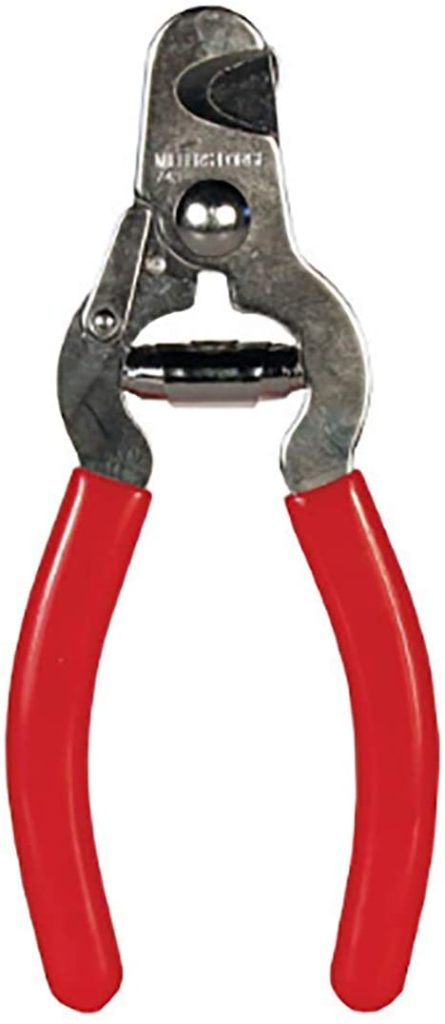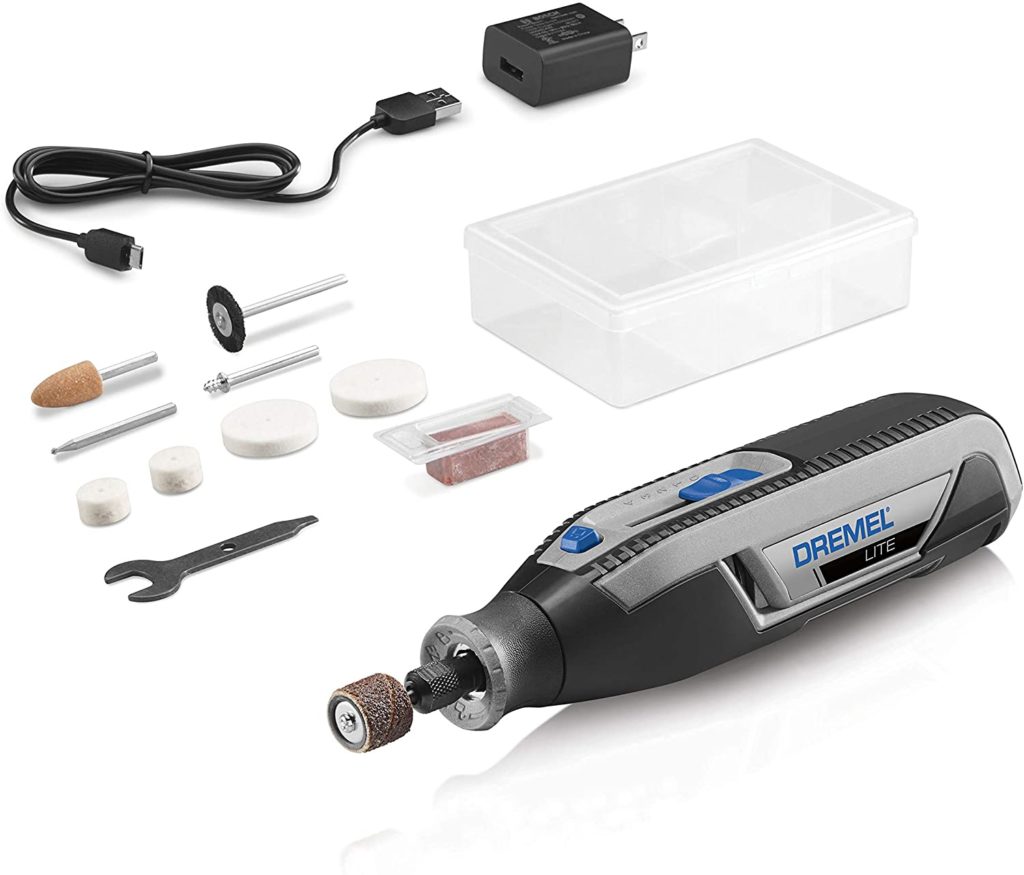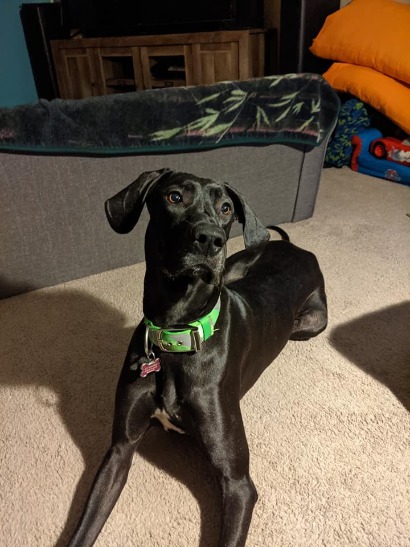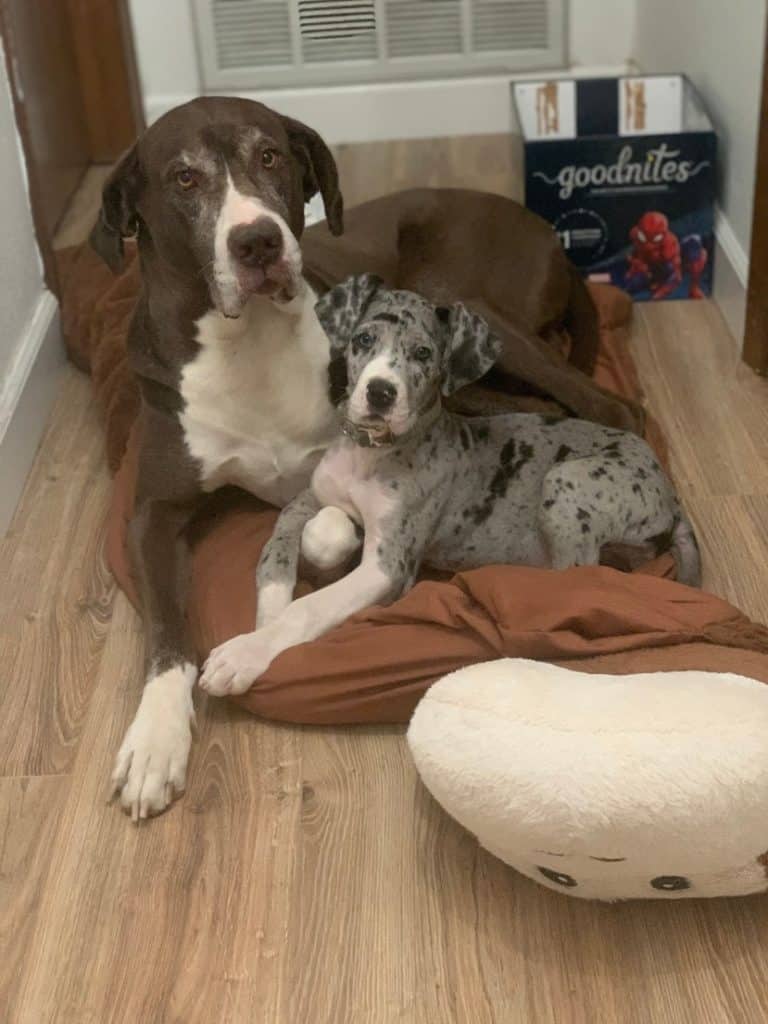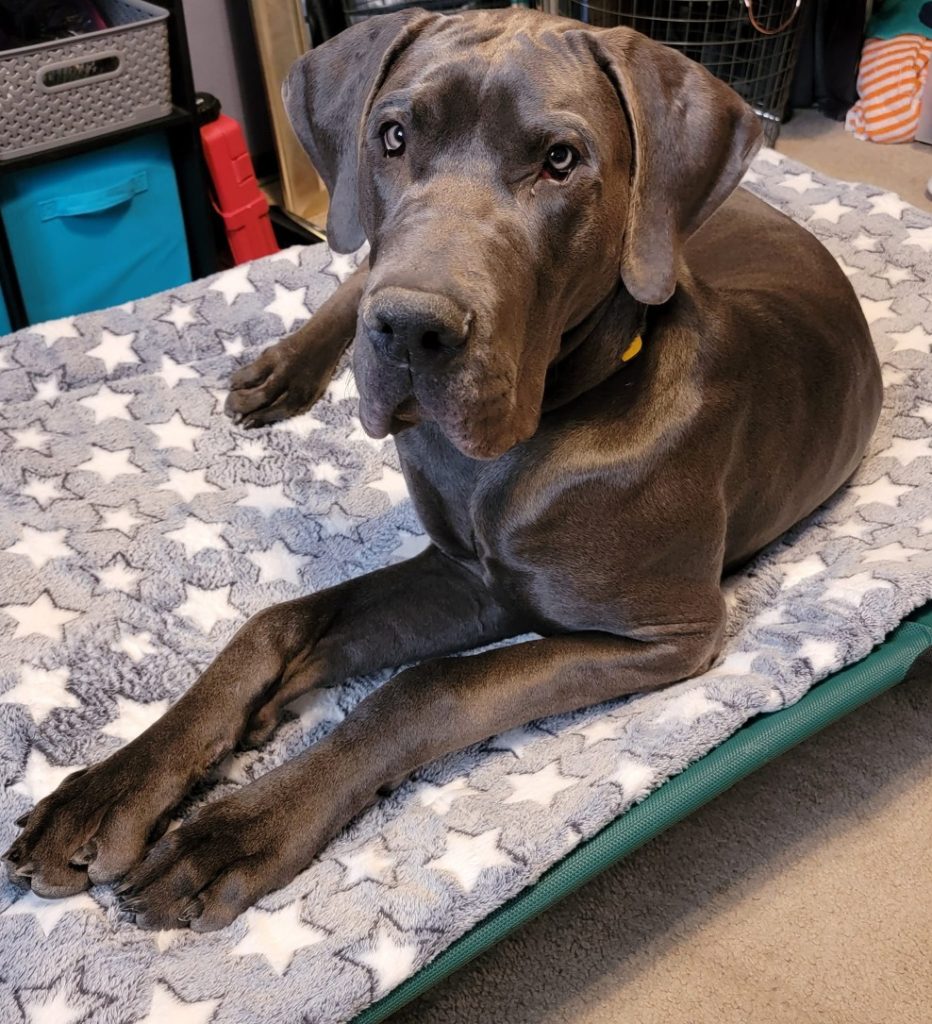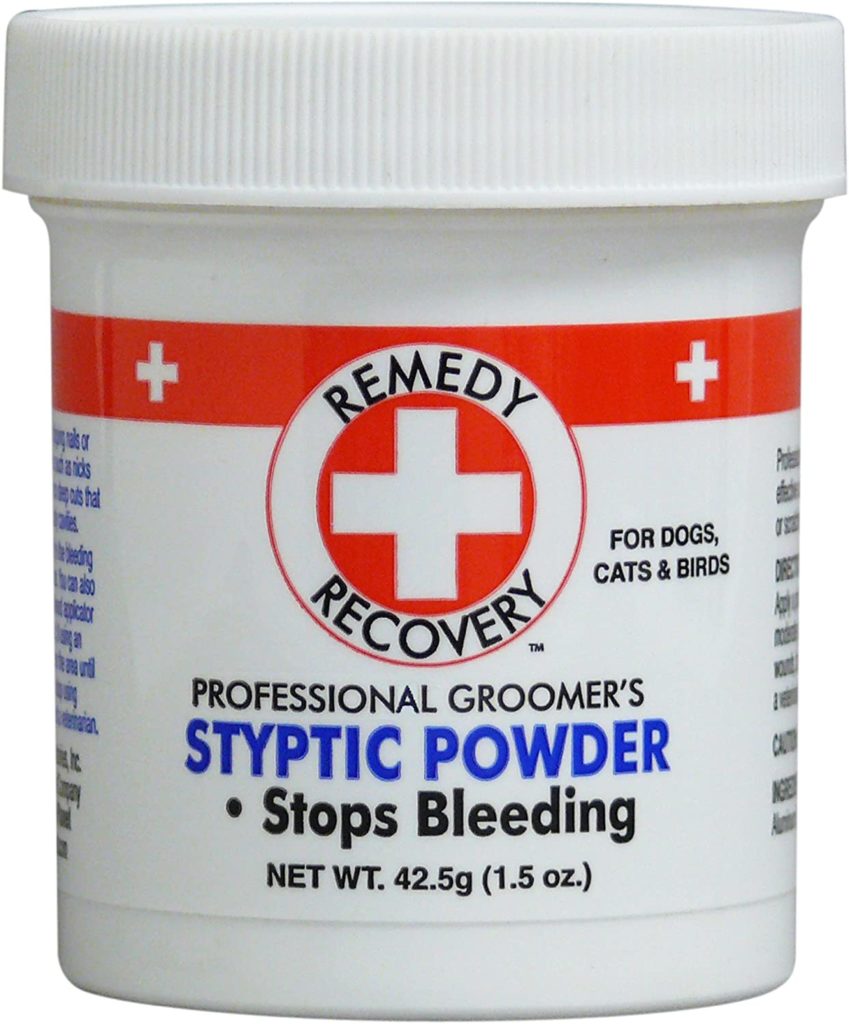Hello, and welcome to my blog about 5 ways to boost joint health in big dogs!
As a big dog owner myself, I know that us big dog-parents make sure that their health and well-being are always a top priority. If you have a big dog, you know that their joints can sometimes face added strain due to their size and weight. That’s why it’s essential to pay special attention to their joint health. In this blog post, we’ll explore five practical and effective ways to boost joint health in big dogs. From understanding the importance of joint health to implementing low-impact lifestyle choices, exploring supplements and medications, considering different forms of therapy, and taking preventive measures, we’ll cover it all.
So, let’s dive in and discover how we can ensure optimal joint function for our canine companions. Join me on this journey to enhance joint health in big dogs!
My ‘Why’ for Joint Health in Big Dogs
My girl, Gigi, is a beautiful black Great Dane who was diagnosed with Wobbler’s Syndrome, a condition that affects her spine and causes instability and weakness in her hind limbs. Despite the challenges she faces, Gigi’s spirit shines through, and her resilience inspires everyone she meets.
When I first learned about her diagnosis, I was filled with worry and uncertainty about what the future held for us.
However, over time, I realized that Gigi’s journey with Wobbler’s Syndrome is not defined by limitations, but rather by the boundless love, support, and determination she exudes every day. She has taught me invaluable lessons about compassion, adaptability, and the true meaning of strength. Together, we have embarked on a path of discovery, seeking the best treatments and therapies to enhance her quality of life. Gigi has shown me that life’s challenges can be overcome with patience, perseverance, and an unwavering spirit.
Through her story, I hope to raise awareness about Wobbler’s Syndrome and offer support and encouragement to others who may be navigating similar circumstances. Gigi may have Wobbler’s, but she is so much more than her diagnosis. She is a beacon of hope, a constant reminder to embrace life’s uncertainties, and a cherished member of our family.
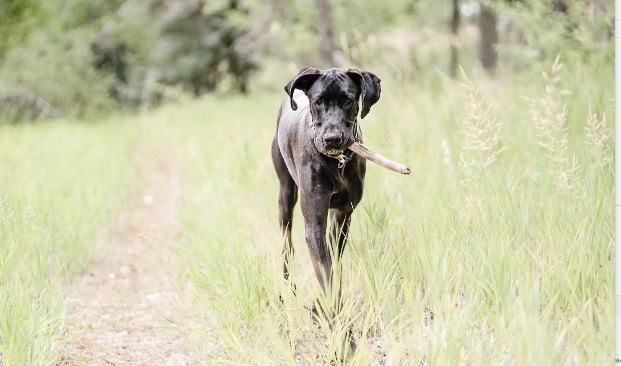
Understand the Importance of Joint Health and How to Boost Joint Health in Large Breed Dogs
When it comes to my big dog’s joint health, I’ve come to understand just how crucial it is for his overall well-being. Those large breeds can put a lot of stress on their joints, and it’s up to us as responsible pet owners to ensure we’re doing everything we can to support them. Joint health plays a vital role in their mobility, comfort, and quality of life.
Resources about big dog health…
- Why Are So Many Dogs Getting Cancer?
- Can Dogs Drink Goats Milk? 5 Astonishing Benefits of Goats Milk for Dogs
- Puppy Knuckling Quick-Start Guide
- Acupuncture for Dogs: Gigi’s Wobblers Journey to a Pain Free Life
- Great Dane Arthritis: 8 Easy and Fast Remedies
- Canine Hip Dysplasia: The Causes, Symptoms, Prevention and Treatment Options of the Painful Condition
That’s why I’ve made it a priority to educate myself on how to boost joint health in my big dogs. From providing a nutritious diet to implementing exercise strategies that promote joint strength and mobility, I’ve learned that there are several practical steps we can take.
By understanding the importance of joint health and taking proactive measures, we can help our big dogs lead happier, more active lives. So, let’s dive into some effective ways to boost joint health in our large breed dogs and give them the support they deserve.
1. Keep a Low Impact Lifestyle
What is a ‘low impact lifestyle’? Well, let me explain…
High impact happens when your dog
Control and Monitor their Weight
Control and Monitor Weight: Maintaining a healthy weight is crucial for reducing joint stress and minimizing the risk of joint damage in dogs. Excess weight puts additional strain on their joints, leading to discomfort and increased chances of developing conditions like osteoarthritis.
Consult with your veterinarian to determine the appropriate weight for your dog’s breed and size, and follow a balanced diet and portion control to help them maintain an optimal weight.
Resources about weight in big dogs:
- Help! My Dog Is Overweight! How to Help Your Dog Lose Weight in 8 Easy Steps
- Male Great Dane Weight: How Much Do Male Great Danes Weigh?
- Why Does My Great Dane Look So Skinny?
- Is My Great Dane Too Skinny? 5 Things You NEED to Know!
- 7 Deadly Risks: Fat Great Danes Face Serious Health Risks
Choose Low Impact Exercise
Choose Low-Impact Exercise: Opt for exercises that are gentle on the joints, such as walking, swimming, or controlled play sessions. Avoid high-impact activities like jumping or intense running, especially on hard surfaces, as they can be hard on your dog’s joints. Regular, low-impact exercise helps keep the joints mobile, strengthens supporting muscles, and improves overall fitness.
Your dog’s feet are usually an implication of their health! Read more about dogs feet here!
Resources about low impact exercises and joints here:
- Home Remedies for Arthritic Dogs: Stop the Pain and Help Your Dog Feel Better
- Do Great Danes Need a Lot of Exercise?
- 5 Ways to Strengthen Your Great Dane’s Feet
Provide Comfortable Resting Areas
Provide Comfortable Resting Areas: Ensuring your dog has a soft and supportive bed or mat to rest on is essential for joint health. Look for orthopedic beds specifically designed to alleviate pressure on joints. These beds provide cushioning and support, relieving stress on the joints during rest and sleep.
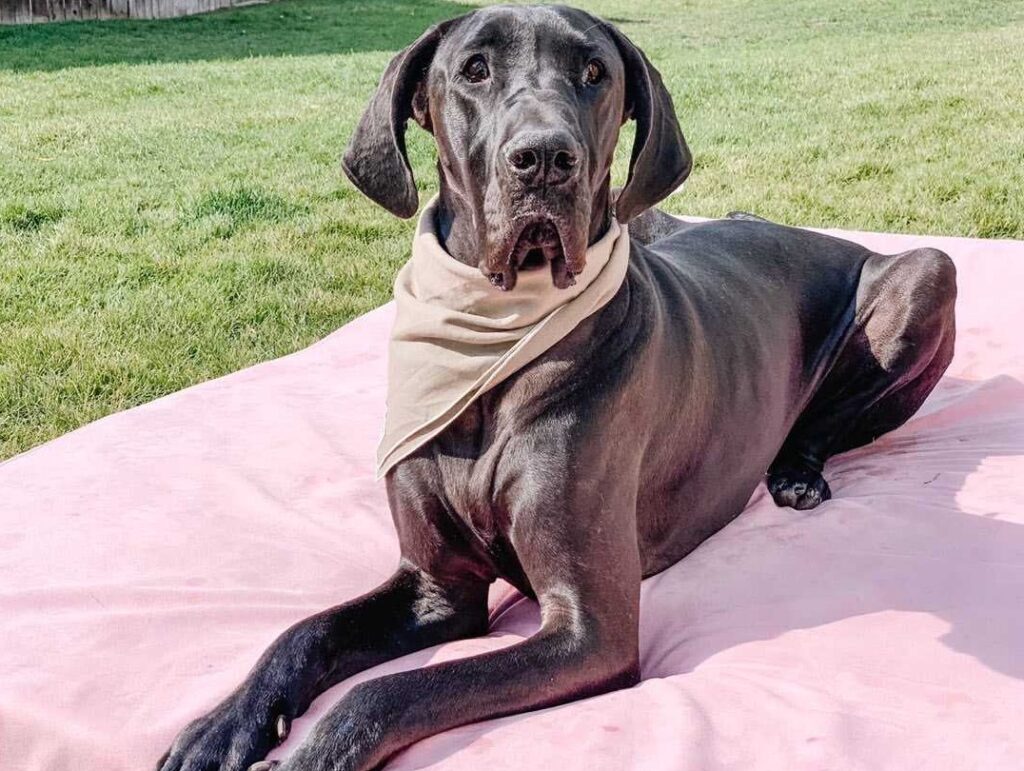
Don’t Let Your Dog’s Jump ‘Downward’
Use Ramps and Stairs: Minimize the strain on your dog’s joints by providing ramps or stairs for them to access elevated areas, such as the car or furniture. Jumping up or down from heights can be particularly harsh on their joints, especially for larger breeds. Ramps and stairs offer a safer and more joint-friendly way for them to navigate these areas.
Shop ramps here:
Gentle Massage and Stretching
Implement Gentle Massage and Stretching: Regularly incorporating gentle massage and stretching into your dog’s routine can help improve joint flexibility, relieve muscle tension, and promote overall joint health.
Gentle massage can increase blood flow to the joints, providing nourishment and promoting healing. Additionally, gentle stretching exercises can help maintain joint mobility and reduce stiffness.
However, it’s important to learn proper massage and stretching techniques from a professional or under the guidance of your veterinarian to ensure you’re applying the right pressure and avoiding any potential injury. Always pay attention to your dog’s comfort levels and stop if they show any signs of discomfort during the process.
2. Keeping Your Dog’s Nails Short
The second thing I always recommend for supporting joint health in big dogs is always keeping their toenails short. (How often should you cut your dog’s nails?)
The length of a dog’s toenails plays a crucial role in maintaining their joint health, particularly for larger breeds.
Long nails can lead to various issues, including poor posture, joint misalignment, and increased strain on their limbs. Regular nail trimming is essential to prevent these problems and promote overall joint well-being. When a dog’s nails are kept short, it helps distribute their weight evenly across their paws, reducing the pressure exerted on their joints during movement. This, in turn, minimizes the risk of joint discomfort, inflammation, and potential injuries.
Additionally, shorter nails provide better traction and stability, allowing your big dog to move with ease and confidence. Make sure to establish a consistent nail care routine, using appropriate nail clippers or seeking professional help from a groomer or veterinarian if needed. By prioritizing regular nail maintenance, you can contribute significantly to your dog’s joint health and overall mobility.
Resources for toenails and dogs:
- Do Dogs Have Nerves in Their Nails?
- How to Cut Black Dog Nails Without Hurting Them
- How Often Should You Cut Your Dog’s Nails?
- The 7 Best Dog Nail Clippers: Great Dane Toenail Problems
- Great Dane Nail Clippers
3. Explore Supplements and Medications for Joint Support
Next, exploring supplements and medications for joint support is of utmost importance!
Use the tools available to you
When it comes to supporting joint health in dogs, supplements and medications can be valuable tools.
These options provide additional support to promote joint function, alleviate discomfort, and potentially slow down the progression of joint-related conditions. It’s important to note that before incorporating any supplements or medications into your dog’s routine, you should consult with your veterinarian to ensure they are appropriate for your dog’s specific needs and to determine the correct dosage.
Fera Pet Joint Supplements
One popular type of supplement for joint support in dogs is Fera Pet Joint Supplement, which we love!
Fera Pet Joint Supplements have become a staple in our household, and we absolutely love them! When it comes to supporting joint health in our beloved dogs and cats, Fera offers a range of supplements that have proven to be highly effective.
Their joint support supplements work wonders in relieving occasional joint stiffness and maintaining the health of cartilage, connective tissue, and overall joint function. One of the key ingredients, glucosamine, plays a vital role in maintaining the synovial fluid that lubricates the joints. This helps to reduce friction and promote smooth movement.
Additionally, the inclusion of green lipped mussel in their formulas supports joint mobility, ensuring our big dogs can stay active and on the go.
Ingredients to look for:
Ingredients to look for in a joint supplement range from organic turmeric, glucosamine, chondroitin, MSM, green-lipped mussel to collagen, hyaluronic acid, omega-3 fatty acids, and antioxidants.
Ingredients in Fera Pet Joint Supplements:
Let’s take a closer look at the ingredients in Fera Pet Joint Supplements:
- Organic Turmeric: Turmeric contains a compound called curcumin, which has powerful anti-inflammatory properties. It can help reduce joint inflammation and relieve pain associated with joint conditions.
- Glucosamine: Glucosamine is a naturally occurring compound found in the body that plays a crucial role in maintaining healthy cartilage. It supports the production of glycosaminoglycans, which are essential for maintaining the structure and elasticity of joint tissues.
- Chondroitin: Chondroitin is another compound naturally found in the body, specifically in cartilage. It helps maintain the structural integrity of cartilage, improves joint mobility, and reduces inflammation.
- MSM (Methylsulfonylmethane): MSM is a sulfur compound that is often used in joint supplements for its anti-inflammatory properties. It may help reduce pain and swelling in the joints and support overall joint health.
- Green-lipped Mussel: Green-lipped mussel is a shellfish native to New Zealand and is a rich source of omega-3 fatty acids, glucosamine, and chondroitin. It has been shown to have anti-inflammatory effects and may help improve joint function and alleviate joint discomfort.
- Collagen: Collagen is a protein that provides structural support to various tissues in the body, including cartilage. Supplementing with collagen can help maintain the integrity and flexibility of joints.
- Hyaluronic Acid: Hyaluronic acid is a natural component of synovial fluid, which lubricates the joints. It helps enhance joint mobility, reduce friction, and support overall joint health.
- Omega-3 Fatty Acids: Omega-3 fatty acids, typically derived from fish oil, have anti-inflammatory properties and can help reduce joint inflammation and pain. They also support overall joint health and mobility.
- Antioxidants: Antioxidants such as vitamins C and E, selenium, and grape seed extract help protect joint tissues from oxidative damage caused by free radicals. They can help reduce inflammation and support the overall health of joints.

Medications for Dog Joint Pain
In addition to supplements, there are various prescription and over-the-counter medications available for joint support in dogs. Nonsteroidal anti-inflammatory drugs (NSAIDs) are often prescribed to manage pain and reduce inflammation associated with joint conditions like arthritis. It’s crucial to use NSAIDs under the guidance of a veterinarian, as they can have potential side effects.
Be careful not to give your dog ibuprofen that is meant for humans, as they can experience ibuprofen poisoning.
Other prescription medications, such as corticosteroids or disease-modifying osteoarthritis drugs (DMOADs), may be recommended in more severe cases or specific joint-related conditions. These medications aim to manage pain, slow down joint degeneration, and improve overall joint function.
Remember that supplements and medications should be used as part of a comprehensive joint care plan, which may include other strategies such as weight management, exercise modification, and physical therapy. Your veterinarian will be able to guide you in selecting the most appropriate supplements or medications based on your dog’s specific needs, overall health, and the underlying joint condition they may have.
4. The Different Forms of Therapy for Joint Support
There are also an abundance of different therapies that can help dogs joint’s stay strong. Some options include water therapy, acupuncture, laser therapy, massage, and physical therapy. Let’s explore these different forms of therapy for joint support in dogs.
Water Therapy in Dogs:
Water therapy, also known as hydrotherapy, involves using water as a medium for exercise and rehabilitation. It can be particularly beneficial for dogs with joint conditions or mobility issues. Water therapy allows for low-impact exercise, which helps strengthen muscles, improve joint range of motion, and reduce pain and inflammation. Examples of water therapy for dogs include swimming in a controlled pool or using an underwater treadmill.
Read more about hydrotherapy from the AKC here.
Acupuncture for Dogs:
Acupuncture is a traditional Chinese medicine practice that involves inserting thin needles into specific points on the body. It is believed to stimulate the flow of energy, or “Qi,” and promote healing. In the context of joint support, acupuncture can help reduce pain, inflammation, and muscle tension, improving overall joint function. It may also stimulate the release of endorphins, which can provide pain relief.
Laser Therapy for Dogs
Laser therapy, also known as cold laser or low-level laser therapy (LLLT), utilizes specific wavelengths of light to promote healing and reduce pain and inflammation. The laser is applied directly to the affected area, and the light energy penetrates the tissues, stimulating cellular regeneration and improving blood flow. Laser therapy can be effective in managing joint conditions and promoting joint mobility.
Massage for Dogs
Massage therapy involves the manipulation of soft tissues to improve circulation, reduce muscle tension, and promote relaxation. When it comes to joint support, massage can help increase blood flow to the affected area, reduce pain and inflammation, and improve joint flexibility. It can also provide overall relaxation and stress relief for your dog.
Why Is Your Dog Licking Lips and Swallowing?
Physical Therapy for Dogs
Physical therapy involves a range of exercises and techniques designed to improve mobility, strength, and flexibility. A licensed physical therapist or a veterinarian trained in rehabilitation can create a customized program for your dog, targeting specific joint issues. Physical therapy may include exercises to strengthen supporting muscles, range of motion exercises, balance training, and other modalities like heat or cold therapy.
Take Preventive Measures to Minimize Joint Stress and Injury
Lastly, it is important to take preventative measures to minimize joint stress and injury. Taking preventive measures to minimize joint stress and injury is crucial for maintaining your dog’s joint health. By being proactive, you can help reduce the risk of developing joint conditions and promote long-term joint well-being. Here are some preventive measures to consider.
Regular Exercise for your Dogs
Provide Regular Exercise: Regular exercise is important for keeping your dog’s muscles strong, supporting joint stability, and maintaining overall fitness. However, it’s crucial to choose activities that are appropriate for your dog’s age, breed, and physical condition. Avoid high-impact exercises that can strain the joints and opt for low-impact activities like walking, swimming, or controlled play.
Do Great Danes Need a Lot of Exercise?
Use Proper Training techniques!
Use Proper Training Techniques: When engaging in activities such as walking, running, or playing with your dog, use proper training techniques to avoid sudden stops, turns, or jumps that could strain the joints. Train your dog to follow commands and respond to cues to prevent them from engaging in activities that could put excessive stress on their joints.
Training Resources
- Why You Should Not Use Harnesses on Great Danes
- My Review of the Gentle Lead Head Harness
- My Great Dane is Aggressive On Leash
- Why is Leash Training Dogs So Dang Hard? 8 Things I Learned About Leash Training
- E Collar with Puppy Training: 9 Exciting Reasons You Should Use an E Collar With Your Puppy
- A Story of Balanced Dog Training Success With My 2 Great Danes
- 5 Controversial Ways I Raise my Danes
Provide Joint Friendly Surfaces
Provide Joint-Friendly Surfaces: Ensure that your dog’s living environment provides joint-friendly surfaces. Provide them with comfortable bedding or dog beds that offer good support and cushioning. Avoid hard or slippery surfaces that could increase the risk of joint injuries.
Consider Joint Support Supplements
Consider Joint Support Supplements: As mentioned earlier, joint support supplements can be beneficial in promoting joint health and reducing the risk of joint problems. Discuss with your veterinarian whether your dog could benefit from the addition of joint supplements to their diet.
Regular Veterinary Check-ups
Regular Veterinary Check-ups: Schedule regular veterinary check-ups for your dog, especially as they age. Routine examinations can help detect early signs of joint issues and allow for prompt intervention. Your veterinarian can provide guidance on joint health, offer preventive measures, and recommend appropriate treatments or therapies if needed.
By implementing these preventive measures, you can help minimize joint stress and injury in your dog. Remember that each dog is unique, and their specific needs may vary. Consulting with your veterinarian will ensure that you are taking the most appropriate preventive measures based on your dog’s individual circumstances and overall joint health.
Read more:
- Pumpkin-Perks: Unveiling the Health Benefits of Pumpkin for Dogs in 5 Simple Truths
- What Health Tests do Great Danes Need for Breeding?
- Male Versus Female Great Dane Puppy, 5 Things to Consider
- Great Dane Homemade Dog Food
- Fera Pet Organics Calming Supplements for Dogs: Our Personal Deep Dive and Honest Review
